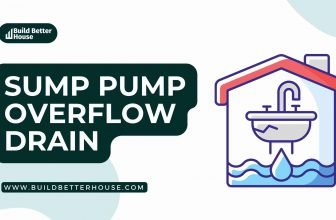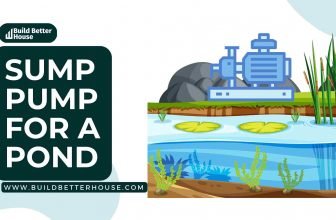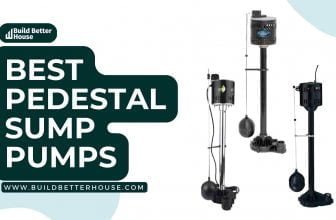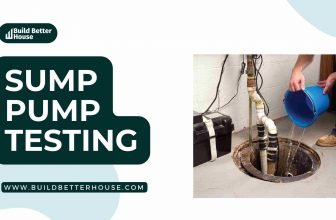Sump Pump Running No Rain – How To Fix This?

Sump pump running no rain is major issue homeowners often face with their system. A blockage in the drainage system is one of the factors that cause a sump pump running no rain.
Ferns, twigs, or gravel can easily obstruct the flow of water and debris away from the sump pump, causing it to run continuously. However, there are other reasons the sump pump running no rain!
We usually use a sump pump to remove basement water from our home. It is a system we install beneath the ground; when it reaches a certain level of water, it automatically drains.
Essentially, this is its function, but the issue arises when we notice that the sump pump running no rain! However, many people must know that running a sump pump without rain can damage the pump.
When the sump tank’s water level falls below the pump’s intake valve, the pump’s blades begin to turn. This action creates a vacuum, which draws water up the discharge pipe. This can attribute to various factors.
In this article, we will discover the cause and solution of the sump pump running no rain, which will help you save your pocket.
6 Reasons For Sump Pump Running No Rain
Hearing your sump pump activate when the sun is out can be concerning. So following are some of the most common reasons why your pump may start even when the weather is nice and there has been no rain.

Increase in Ground Water
A rise in groundwater is one of the most frequent causes of your sump pump running no rain.
Groundwater levels can rise due to a broken pipe, nearby construction, or overflowing water sources, which can cause water to collect at the base of your house and activate your sump pump.
So to prevent your sump pump from overheating or malfunctioning, you may need to contact a plumber or a basement waterproofing expert if groundwater or water table is the cause of your pump’s continuous operation.
Snow is Melting
Snowmelt may also cause your sump pump running no rain.
Say your area recently experienced snowfall, but the temperature has risen above freezing. This could result in groundwater infiltration, water evaporation, and snowmelt. Despite your landscaping’s ability to absorb some of the extra water, it’s still possible that your sump pump will need to operate.
As long as you can turn off the sump pump after the snow has completely melted and the ground has dried out, you can leave the sump pump running in this scenario. However, avoiding too much moisture damaging your home or its foundation would be best.
A Rise In Water Table
The other reason that may cause your sump pump running no rain can be the rise in the water table. The dry soil above the water table will separate from the saturated rock and sediment below.
The water table can fluctuate at any time of the year due to increased rainfall. If you live near water or if it has recently rained a lot, your sump pump might be running nonstop. Usually, the water table will gradually rise to its average level, but if the water has nowhere else to go, it might stay that way indefinitely.
If a high water table is apparent, check your home once more for any additional flooding problems.
Broken Float Switch
A float switch is probably part of your sump pump system. The float switch floats up when the water level in the sump pit rises, activating the switch that starts the pump and causing your sump pump running no rain.
Typically, the float switch drops, and the pump turns off when the water returns to its original level. Your sump pump might run continuously, even when there isn’t any water in the basin, if you have a broken float switch that won’t return to its initial position.
An expert should be able to determine what malfunctioned the float switch and how to fix it. By manually adjusting the switch or spraying lubricant on it to see if it will move, you can try to resolve the problem. If not, having a plumber look at it might be a good idea.
Clogged Drain Line
Even when the sun is out, and there is no chance of rain, a clogged drain line in your sump pump will ensure that it continues to run.
Depending on how long you have had your sump pump, the drain line may accumulate dirt and other debris restricting water flow. If water cannot drain, it may get in the basin and malfunction the sump pump or, in more extreme situations, overheat and emit steam and smoke.
If your sump pump is still running after ruling out the possibilities mentioned above, you should check to see if the drain line is clogged.
Pump Not Draining
Check to see if your pump is draining water from the pit and if it leads to your sump pump running no rain. There are a variety of mechanical and electrical causes for your pump to keep running even when there is no water pumping from the pit.
First, to turn on the float switch, fill the pit with water and raise it to the on position. If the pump starts to run, but the water doesn’t drain, your pump or drainage system may be at fault.
What Is The problem?
Have you wondered why your sump pump is running no rain? Still trying to figure out what to do?
Here is a Step-by-Step Guide for Fixing the Sump Pump Running No Rain!

Step 1. Check the float switch
Unplug the main pump and turn off the circuit breakers before you begin.
Turn on your primary pump manually to see if it operates. If the pump starts working, you can continue to the following step. If not, you’ll need to unscrew the float switch from its mounting and carefully turn it with a screwdriver until it stops.
Step 2. Remove the float switch holder
A small bracket with two screws holds the float switch in place. To remove the bracket from the float switch, turn it counterclockwise (use a screwdriver to turn it). The float switch can now be removed from its holder and hold the unit in place again.
You will need to replace your main pump if the steps mentioned above need to be fixed.
Step 3. Reset your sump pump
Remove the float switch from its holder, and turn the bottom rotor 90 degrees clockwise with a plumber’s wrench. Make sure not to touch the bottom rotor. Now put the bolt back in place, and it can now reconnect to the sump pump.
Step 4. Test your sump pump
After that, test your pump to ensure it is operating correctly. Check if the water level rises after activating the electrical circuit breaker.
If you can’t see any water, go back and do the first few steps again. Please be patient, as your sump pump may need up to 48 hours to calibrate itself properly.
Step 5. Ensure the seal of the sump pump is proper
Your sump pump may be experiencing float switch-related issues if running too frequently. Water leaks and inadequate sealing are the main causes of float switch malfunction.
Once your sump pump has been tested and found to be functioning correctly, you should check the foundation of your house for any indications of water leakage. Use a moisture meter to conduct an internal inspection of the foundation of your home to ensure that everything is sealed properly.
If the float switch is malfunctioning, you can replace it or call a plumber. Otherwise, you’ll have to pay for the parts and labor costs to replace your main pump. Contact the manufacturer for further instructions if a warranty covers your sump pump.
The right thing to do is to contact a service technician with experience in sump pump repair if you experience the problem of a sump pump running no rain and you cannot find a solution. Through this, you can only replace items in good condition, which will ultimately cause more severe issues and costs.
How To Prevent A Sump Pump Running No Rain?
Regular maintenance is the simplest way to stop your pump from running constantly. Think about waterproofing your basement as well. There are several ways to maintain the stability of your basement’s foundation and control water penetration.
Next, keep researching the most effective ways to stop your basement from flooding during periods of heavy rain. You will need backup plans if your sump pump cannot handle the volume of water at once.
Moreover, a sump pump running nonstop is likely to malfunction and lose efficiency.
How Long Should A Sump Pump Run Per Cycle?
It depends on how much water you want to remove from the sump pit and when you need to remove that water. If running your sump pump too long could harm or destroy it from a performance standpoint. The pump is left running for too long; it may defect your system.
It’s time to check the operation of your sump pump if you notice water beginning to collect in or around your basement or crawlspace.
A sump pump needs more lift capacity, especially if there is water in the area, it will be able to drain all the water from the pit. The sump pump must lift the water and keep it moving up the pipe, so it cannot drain.
As long as your sump pump is working properly, you won’t have to worry about your basement flooding or damaging your foundation.
Even though there may be standing water in the basement, it won’t get any deeper and won’t damage anything until you need to refill the pit. Once the water is retrieved, turn off the pump and let it refill.
Conclusion
Sump pumps are vital for ensuring that no water ever enters your home. When the sump pump works properly, it sucks up water from the pit and moves it up to the central drainage system to be filtered by the backyard filter or septic tank.
The problem with this system is that when there’s no rain, the pit fills with water, and the pump turns on. This is a significant cause of the sump pump running no rain. Fortunately, there are many ways to solve this problem, and mostly, they don’t require you to replace your pump!
One of the easiest things to do in this situation is to add water to your sump pit. It will remain full, preventing it from overflowing. You can perform the inspection mentioned above of your sump pump. Call a professional for assistance if you cannot manage your system independently.
How often should the sump pump run when raining?
When it rains, most sump pumps operate every 15 to 20 seconds. It might run more frequently if your pump is less powerful or if it’s raining more heavily than usual.
Why does my sump pump run when it rains?
While it rains, your sump pump operates since water fills your basin and pushes up the float switch, which activates the pump.
Should my pump be running constantly after heavy rain?
Yes, following a rain storm, the water table under your house will rise, which will start your pump running.
FAQ
How often should the sump pump run when raining?
When it rains, most sump pumps operate every 15 to 20 seconds. It might run more frequently if your pump is less powerful or if it’s raining more heavily than usual.
Why does my sump pump run when it rains?
While it rains, your sump pump operates since water fills your basin and pushes up the float switch, which activates the pump.
Should my pump be running constantly after heavy rain?
Yes, following a rain storm, the water table under your house will rise, which will start your pump running.






